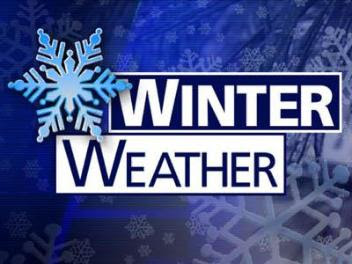
US - Here it comes, get ready for that cold weather, folks... As the snowfall winds down across the Great Lakes region through Wednesday, the unseasonably cold temperatures associated with an arctic air-mass will continue to surge southward through the central U.S. Temperatures are forecast to be 20 to 40 degrees below climate average for areas east of the Rockies into the Great Plains.
Heavy precipitation possible over parts of the Pacific Northwest...Freezing rain possible over parts of the Pacific Northwest...Temperatures will be 25 to 40 degrees below average east of the Rockies
to the Plains and parts of the Middle Mississippi Valley.
Very cold high pressure over the Northern High Plains will sink southeastward to the Central Plains by Thursday evening. Temperatures associate with this air mass will be significantly below average. Along
the leading edge of the cold air, a front extends from the Northern Appalachians to the Mid-Atlantic then southwestward to the Central Gulf Coast that will move off the East Coast by late Wednesday night. Energy associated with the boundary will produce light to moderate rain over parts of the Northern Appalachians that will move off the Northeast Coast by late Wednesday afternoon. In the cold air behind the front, light snow will develop over parts of the Upper Midwest tapering off to the Upper Great Lakes by Wednesday evening. Lake enhanced snow will linger over the Great Lakes through Thursday evening. Additionally, up-slope flow will aid in producing light snow over parts of the Central Rockies through Thursday.
Meanwhile, scattered light rain over parts of the Central/Southern Appalachians will come to an end by Wednesday afternoon. In addition, upper-level energy moving along the Gulf Coast will trigger light rain over parts of the Western Gulf Coast through Thursday morning. As the energy moves off the Southeast Coast by Thursday evening, light rain will develop over parts of the Carolina Coast.
A front over the Eastern Pacific will move into the West Coast and dissipate as the associated energy enters an area of upper-level ridging. Moisture associated with the system will move into the West Coast overrunning the cold air associate with the cold high pressure over the Plains. Rain will move into the California Coast by Wednesday evening, becoming light to moderate over parts of Northern California/Oregon on Thursday. Moderate snow will develop over parts of the higher elevations
of Oregon also on Thursday, with pockets of freezing rain developing over parts of the Washington/Oregon Cascades. By Thursday evening, light snow will expand over parts of the Northern Inter-mountain Region and the Northern/Central Rockies.